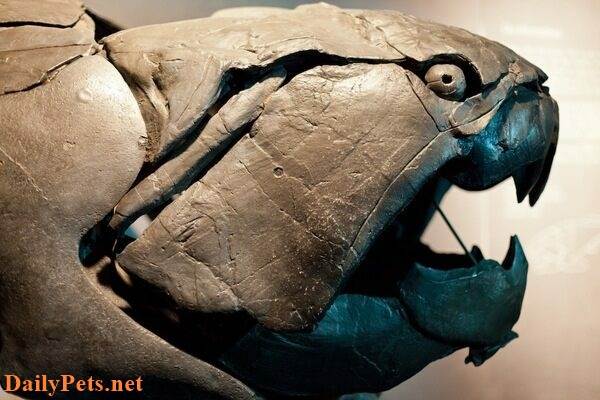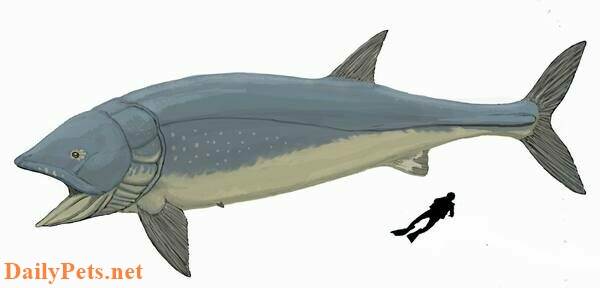Fish are aquatic vertebrates that belong to the taxonomic group Pisces. They are characterized by having gills, fins, and a streamlined body adapted for living in water.
Fish are diverse and inhabit various aquatic environments, including oceans, seas, rivers, lakes, and specialized habitats like caves.
The evolution of fish is a fascinating story that spans hundreds of millions of years. It is crucial to note that fish were among the earliest vertebrates to appear on Earth.
What are fish?
In a simplified definition, fish are chordates possessing a backbone or notochord for support. They predominantly inhabit the water and possess gills to extract oxygen from it. Their appendages lack digits and are in the form of fins. Typically, fish are ectothermic creatures.

However, it’s important to note that there are exceptions to these traits. Some fish can survive for extended periods out of the water, and certain species like tuna and large sharks can maintain body temperatures higher than that of their surrounding water. Nonetheless, these characteristics generally encompass the essence of fish.
The evolution of fish
Around 530 million years ago, the first organisms that could be considered primitive fish emerged in the fossil record. These ancient fish differed significantly from the fish we recognize today, as they lacked jaws and possessed primitive spinal columns known as notochords and rudimentary gills. One notable example of these primitive fish is Haikouichthys, which displayed an early spinal column and revolutionary features, including a distinct head and tail and a bilaterally symmetric body, with the left side mirroring the right. The head of Haikouichthys featured two eyes and a mouth.
The illustration provided is a depiction of the ancient primitive vertebrate Haikouichthys. Fossils of Haikouichthys, dating back 525 million years, have been unearthed from the Chengjiang fauna in China.

In the subsequent Ordovician Period, approximately 480 million years ago, the spinal column began to take on its modern form, and true fish appeared in the fossil record. Fish from this era started developing armored plates on their heads and thoraxes. An example of a jawless fish from this period is Astraspis, covered in star-shaped scales. Later in the Ordovician, fish evolved bony jaws, making them formidable predators. During this time, the fish lineage split into two distinct groups: the Placoderms and Acanthodians.
The Placoderms continued their development, eventually leading to bony fishes and other vertebrates. On the other hand, the Acanthodians evolved into spiny sharks. These organisms shared characteristics of both bony fish and sharks, with bodies resembling sharks but covered in bony scales similar to those found on modern garfish.

In the late Silurian period, life witnessed a surge in diversity, leading to further splits in the fish lineage. The Placoderms branched off into Osteichthyes, eventually becoming modern bony fish. Simultaneously, the Acanthodians diverged into Chondrichthyes, which would later become modern sharks. During the transition from the Silurian to the Devonian period, Chondrichthyes rapidly diversified into more agile and aggressive species. This competition or predation from sharks contributed to the extinction of the Placoderms by the end of the Devonian.
The Devonian also saw the emergence of lobe-finned fish, like the Coelacanth, which had fleshy lobes to stiffen their fins, different from the ray-finned fish with thin bone rays. With the extinction of Placoderms, sharks underwent significant radiation in species, leading to the development of various adaptations. One notable example is the Stethacanthidae family, which developed a dorsal fin resembling a brush, possibly used in mating and other functions.

The Permian-Triassic extinction event marked the end of the Permian Period, causing the disappearance of 90-95 percent of all ocean species, including spiny sharks. The early Triassic was a recovery period for fish, with many species showing similar forms due to the development of new species from a limited number of existing families. By the end of the Triassic, bony fish experienced similar radiation of species as seen in the sharks of the Devonian, laying the foundation for most modern fish.

Another extinction event occurred between the Triassic and Jurassic, leading to the extinction of 70 percent of all fish species. The increase in species during the Triassic also resulted in larger bony fish during the Jurassic. Notable fish like Ichthyodectes and Leedsichthys, a giant filter-feeder reaching up to 50 feet in length, appeared during this period.

Throughout the Cretaceous Period and into the Cenozoic Era, ancestors of modern fish became more prominent in the fossil record. Charismatic predators like the true sturgeon and sharks like Cretoxyrhina mantelli emerged alongside giant bony fish like Xiphactinus.
Fish thrived even during the KT extinction event that wiped out the dinosaurs and many land species. Approximately 80 percent of cartilaginous fish and up to 95 percent of bony fish survived this event. The ray-finned fish experienced their expansion in species and sizes shortly after the KT event, possibly due to the extinction of ammonites, their competitors for food and resources.

Over the last 50 million years, fish have continued diversifying and evolving into the varied forms we see in today’s oceans.














